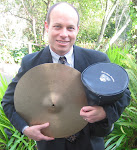Chicago
mayor Rahm Emanuel has offered bonus pay to teachers that waive union contract
rules and keep children in school longer each day. See the New York Times
article here. A teachers’ union rep calls the mayor a “Republican” and opposes
his education policy. The union is misguided, and Chicago students, on the low end of instructional time compared to other urban schools, can only
benefit from increased instructional time. How do I know? Just compare a
wealthy school district (my kids’ district) and a middle-class district (where
I teach), located about 20 miles from
each other.
My children attend a wealthy high school district that tests
very high compared to other California
schools. I teach at a district that is not as generously supported by taxpayers
and private donors, and my district’s API (state test) scores are not as high.
This situation is no surprise to anyone who has examined the strong
correlation between average family income and standardized test scores. The
richer the school district, the higher the test scores.
Do rich parents genetically produce smarter children? Do
they buy more books for their kids along with the sports cars? Or do smart
people become rich and procreate, cloning kids just like them?
Perhaps the causal link between wealth and API scores may lie elsewhere—in instructional time.
Perhaps the causal link between wealth and API scores may lie elsewhere—in instructional time.
Wealthier families support their local public schools
through property taxes and donations to school foundations. That money, in
turn, supports additional instructional time for the students, especially the
lower level students, and those students increase their achievement. In turn, API scores
dramatically increase. Middle- and lower-middle class families raise much less money
through property taxes and direct donations. These districts can’t afford
increased instructional time. The state of California does not even out the funding discrepancies by contributing more money to the poorer districts.
My kids’ high school exemplifies the disparity between
richer and poorer districts. My own children must attend after-school tutoring if they
fail an exam. They must attend a homework club if they didn’t prepare well the
night before or didn’t turn in an important assignment. These kids would
encounter no consequences (besides a poor grade) in a poorer high school (i.e., the high school where I teach) and no chance to relearn the material. Additionally,
my children's teachers are contracted to work a lot more than I am: ten hours more per
week. That adds up to 400 more hours of lesson planning and evaluating the
efficacy of instruction. When my children need extra time with a teacher they
get it, and teachers accomplish more in preparing and evaluating their
practice. API scores skyrocket as a result. Rahm is right.






I disagree because all the data shows that the single most significant predictor of achievement is parent's education level (higher parent ed the better kids do). JB
ReplyDeleteDetermination and grit can do amazing things. We need to change the ossified patterns instead of giving up, saying, "These guys have more money or more education." More instruction time may be the way to break out.
ReplyDeleteSecondly, not all plots on the above scatter-plot fall in a nice neat correlation. Instructional time will explain outliers.
ReplyDelete